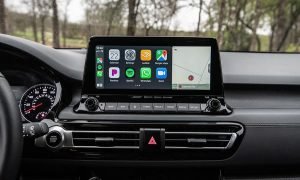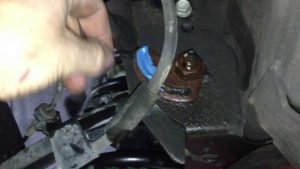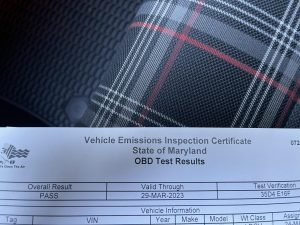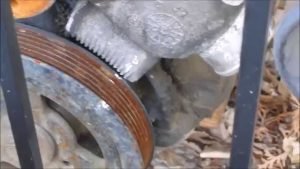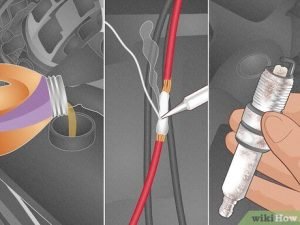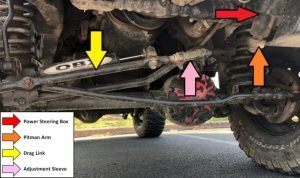
Contents
How to Install Backup Sensors in Your Car: A Step-by-Step Guide
Adding backup sensors to your car is a fantastic way to enhance safety and peace of mind, particularly when navigating tight spaces or parking in challenging locations. While professional installation is always an option, many DIY enthusiasts can successfully tackle this project with the right tools and instructions. This guide will walk you through the process, offering tips and highlighting common mistakes to avoid.
🛒 Recommended Product
Before You Begin:
- Consult your car’s manual: Understanding your vehicle’s electrical system and bodywork is crucial. This will help you avoid damaging existing wiring or components.
- Gather your tools: You’ll need a drill, wire strippers, crimpers, a multimeter (for testing circuits), electrical tape, and potentially a plastic trim removal tool. The specific tools will depend on your chosen sensor kit and vehicle.
- Plan your sensor placement: Ideally, sensors should be evenly spaced across the rear bumper. Consider the bumper’s curvature and any existing features (exhaust pipes, reflectors) to ensure optimal coverage and avoid obstructions. Mark your desired locations lightly with painter’s tape.
- Choose a suitable location for the control module: This small box will house the sensor’s electronics and needs a secure, dry place within the car’s interior, preferably near the rear lights.
Step-by-Step Installation:
- Prepare the Bumper: Carefully remove any necessary trim pieces to access the area where you’ll be drilling. Use a plastic trim removal tool to avoid scratching the bumper.
- Drill Pilot Holes: Using your marked locations as guides, drill pilot holes slightly smaller than the diameter of your sensors. Go slowly and carefully to avoid cracking the bumper.
- Install the Sensors: Push the sensors into the holes you’ve drilled. Ensure they are flush with the bumper’s surface. Some kits may require additional securing mechanisms (nuts, bolts, or adhesive).
- Run the Wiring: Carefully route the wiring from the sensors to the control module’s location. Try to keep the wiring hidden and protected from potential damage. Secure the wiring using zip ties or cable clamps.
- Connect the Wiring: Refer to your sensor kit’s instructions for precise wiring diagrams. Incorrect wiring can lead to malfunctioning sensors or even electrical damage. Use crimp connectors and electrical tape to ensure secure connections.
- Install the Control Module: Once the wiring is connected, securely mount the control module in its chosen location.
- Test the System: Before reassembling everything, test the sensors thoroughly. Check for accurate distance readings and proper audible alerts.
- Reassemble the Bumper: Carefully reinstall any trim pieces removed earlier. Ensure all panels are properly aligned and secured.
Tips for Success:
🛒 Recommended Product
- Work in a well-lit area: Proper lighting will make it easier to see what you’re doing and avoid mistakes.
- Take your time: Rushing the process can lead to errors and damage. Patience is key.
- Use a multimeter to test your connections: This will help you identify any wiring problems early on.
- Double-check your work: Before permanently securing anything, verify everything is correctly installed and functioning.
Common Mistakes to Avoid:
- Drilling holes too large: This can lead to loose sensors and inaccurate readings.
- Damaging the bumper during installation: Use the right tools and take your time.
- Incorrect wiring: Carefully follow the instructions and use a multimeter to check your connections.
- Improperly securing the sensors: Loose sensors can provide inaccurate readings or even fall off.
Conclusion:
Installing backup sensors can significantly enhance your driving experience and safety. While the process may seem daunting at first, by following these steps, taking your time, and exercising caution, you can successfully install them yourself. Remember, if you’re uncomfortable with any aspect of the installation, it’s always best to consult a professional. Enjoy the added safety and convenience!
🛒 Recommended Product
FAQ
Q. What tools and materials will I need to install backup sensors?
A. You’ll need a drill with a drill bit sized for the sensors, a wire stripper, electrical tape, a multimeter (optional but helpful), a wiring harness (usually included with the kit), and the backup sensor kit itself. Some kits include everything you need, while others may require additional components like adhesive or fasteners. Always consult the specific instructions that came with your kit.
Q. Where should I install the sensors on my bumper?
A. Ideally, the sensors should be spaced evenly across the rear bumper, approximately 12-18 inches apart, depending on the width of your vehicle. Avoid placing them too close to the edges, as this could lead to inaccurate readings. Consult your kit’s instructions for specific placement recommendations, as this may vary slightly depending on the model. Also, avoid installing them in areas where they might be obstructed by mud flaps or other accessories.
Q. How do I wire the backup sensors to my car’s reverse lights?
A. This is the most technically challenging aspect. You’ll need to locate your car’s reverse light wiring (usually located near the taillights), carefully tap into the positive (+) wire using a wire tap or by soldering (soldering is preferred for a more reliable connection), and connect the sensor kit’s power wire to this. Ensure the reverse light wire is energized only when the car is in reverse. Incorrect wiring could lead to malfunctioning sensors or damage to your vehicle’s electrical system. It’s recommended to consult your vehicle’s wiring diagram or seek professional help if you are uncomfortable with this step.
Q. What if the sensors aren’t detecting obstacles correctly?
A. Several factors can affect sensor accuracy. Ensure the sensors are clean and free of debris. Incorrect installation, especially misaligned sensors or poorly connected wiring, is a common cause. Check your wiring connections and sensor alignment. Consider the surface type – rough surfaces or uneven ground can sometimes cause inaccurate readings. If problems persist, consult the kit’s troubleshooting section or seek professional assistance.
Q. Can I install backup sensors myself, or should I hire a professional?
A. While many people successfully install backup sensors themselves, it requires some basic electrical and mechanical skills. If you’re uncomfortable working with car wiring or are not confident in your ability to drill cleanly and accurately into your bumper, hiring a professional installer is recommended. Improper installation can lead to damage to your vehicle or malfunctioning sensors.
Q. What are the different types of backup sensors available?
A. You’ll commonly find wired and wireless backup sensor systems. Wired systems generally offer more reliable performance and are often cheaper upfront. Wireless systems are easier to install but might be more prone to interference or battery issues. Some systems offer additional features like audible alerts, distance displays, and visual indicators. Consider your budget and technical abilities when making your choice.
Q. How do I deal with false alarms from my backup sensors?
A. False alarms can result from several issues including dirty sensors, obstructions close to the sensors that are not actually obstacles (e.g., a bumper sticker), or a problem with the sensor system itself. Clean the sensors thoroughly. Check for any obstructions near the sensor location. If the problem persists, review the installation and wiring, and consider contacting the manufacturer or a qualified technician for assistance.
Related Articles
How to Remove Scratches from Car Paint Without Buffing
How to Remove Scratches from Car Paint Without Buffing: A Detailed Guide Dreaded scratches on your car’s paint? Don’t panic! While buffing…
How to Replace Windshield Wipers on a Car
How to Replace Your Car’s Windshield Wipers: A Step-by-Step Guide Rain, snow, sleet, or even just a light mist – your windshield wipers are your…
How to Clean Leather Car Seats Properly
How to Clean Leather Car Seats Properly: A Step-by-Step Guide Leather car seats add a touch of luxury and sophistication to your vehicle. But to keep …
Affiliate Disclosure: As an Amazon Associate, I earn from qualifying purchases made through links on this site.

